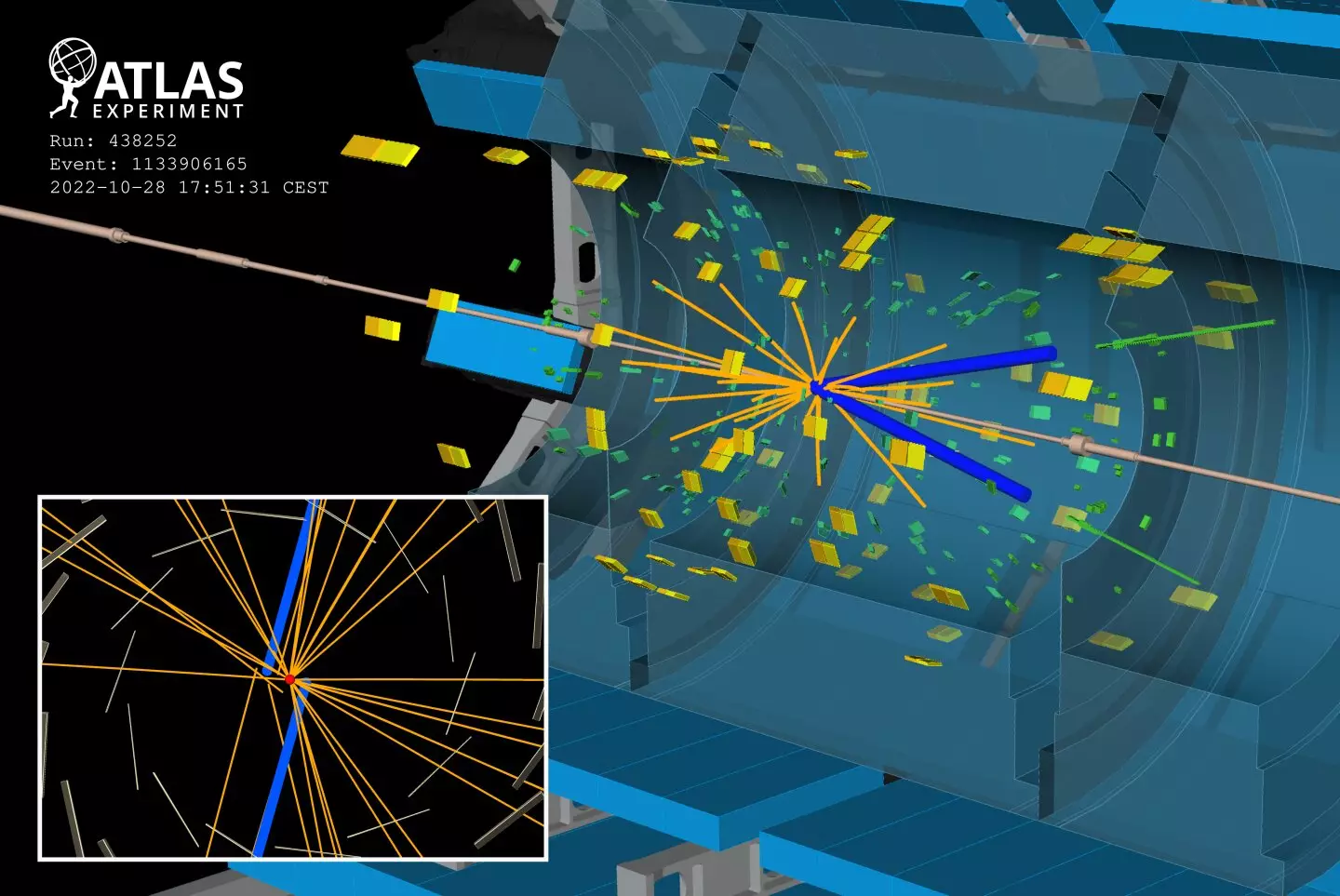The Standard Model of particle physics stands as one of the greatest triumphs of modern science, effectively categorizing the fundamental particles and forces that constitute our universe. However, its inability to account for phenomena such as dark matter, gravity’s role at subatomic levels, and other unexplained behaviors underscores a significant limitation: it is ultimately an incomplete theory. This inadequacy has spurred global scientific communities and innovative thinkers to embark on an exciting journey to uncover new physics phenomena capable of bridging the theoretical gaps.
The annual International Conference on High Energy Physics (ICHEP) acts as a vital platform for sharing the latest discoveries and hypotheses in the field. Indeed, the biannual conference held from July 17 to 24 in Prague offered a stage for the ATLAS collaboration at CERN’s Large Hadron Collider (LHC) to present groundbreaking findings from its ongoing research into physics beyond the Standard Model. Their focus on exotic particles such as magnetic monopoles and long-lived particles encapsulates an adventurous spirit, probing into uncharted territories of particle physics.
Magnetic Monopoles: Hypothetical Yet Compelling
Central to the ATLAS collaboration’s efforts is the ambitious quest to find magnetic monopoles—hypothetical particles that, unlike conventional magnets presenting both a north and south pole, would possess only a single pole. Should these elusive entities be detected, the implications would stretch far beyond mere curiosity; they would lend credence to “grand unified theories” that strive to seamlessly interlink the strong, weak, and electromagnetic forces at extremely high energies.
Research efforts at the LHC, particularly following the recent 5.36 TeV collisions of lead ions, aim to witness these monopoles emerge from the chaos of proton interactions. In an intriguing twist, these interactions give rise to surreal magnetic fields—among the strongest measurable in the universe. Here, the expectation is that monopoles, if they exist, would generate substantial ionization in particle detectors, effectively creating an observable “cloud” of charged particles. However, despite meticulous analysis during Run 3, the ATLAS collaboration has not yet encountered any signs of monopoles, reiterating the challenge that remains ahead in the exploration of high-energy particle physics.
Long-Lived Particles: A New Frontier
In addition to magnetic monopoles, another compelling area of investigation involves long-lived particles, which might carry the secrets of supersymmetry—an extension to the Standard Model that proposes each particle has a heavier counterpart. Unlike typical particle decay events that yield immediate detectable outcomes, long-lived particles promise to reveal their presence through delayed signatures, appearing far from the main collision point—as witnessed in ATLAS’s latest methodologies.
The collaboration has introduced innovative tracking techniques to enhance data collection for such particles, recognizing the need for dedicated strategies as they often evade conventional searches. Recent research focuses on distinctive signatures such as displaced particle tracks. The ongoing experimentation with 13.6 TeV proton-proton collisions has paved the way for promising breakthroughs in our understanding of these hypothetical particles.
Nonetheless, ATLAS has experienced a frustrating absence of yields that deviate from Standard Model predictions. The data presented magnifies existing boundaries on the parameters that characterize long-lived supersymmetric partners of fundamental leptons like electrons, muons, and tau particles. These stringent constraints echo the evolving nature of particle discovery ecosystems, urging the scientific community to refine their approach continuously.
Prospects and Innovations Ahead
The rejection of existing models and the quest for new signals reflect a broader endeavor within physics to dismantle long-standing assumptions and comprehensively redefine our understanding of the universe. As researchers aim towards the forthcoming High-Luminosity upgrades at the LHC, enhancing luminosity and collision frequencies, the potential for uncovering new phenomena grows exponentially. The implications of ongoing research extend beyond the confines of particle physics; they may touch upon fundamental questions regarding the very fabric of our reality.
As we stand at the precipice of new discoveries in high-energy physics, the ATLAS collaboration captures the spirit of an unyielding search for knowledge. Every null result brings the scientific community one step closer to refinement in search techniques, data analysis methodologies, and theoretical frameworks. While the void left by missing particles remains daunting, it also symbolizes an expanse of opportunity—an open invitation for the bright minds of today to venture further into the realm of discovery. In the grand narrative of understanding our universe, the journey of exploration continues unabated, where the thrill of the unknown propels scientists toward future triumphs in physics.

